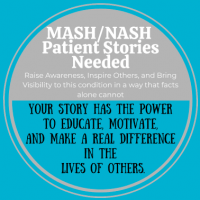In 2021, approximately 37 people per every 100,000 were diagnosed with idiopathic hypersomnia (IH), a neurological disorder characterized by excessive sleepiness and excessive daytime sleepiness. This amounts to roughly 0.037% of the population. But some physicians and researchers believe that idiopathic hypersomnia could be underdiagnosed or underrecognized based on barriers such as finances or access to sleep testing.
According to Emily Cooke in Live Science, a recent study suggests that idiopathic hypersomnia may be more prevalent than once believed. Researchers sourced data from 792 individuals taking part in the Wisconsin Sleep Cohort study. They explain their findings in Neurology, noting that they used polysomnography, the multiple sleep latency test, and patient surveys to identify potential IH cases.
The Study Says…
Altogether, the research team identified 12 individuals who they believed had IH. But why? These people reported chronic excessive daytime sleepiness (even after long periods of rest) over a multi-year period. Further, people with suspected IH often fell asleep more quickly than their peers and were more likely to randomly doze off during the day. Some individuals (about 30% of those suspected of IH) had excessive sleepiness that went into remission, but researchers don’t know why.
Ultimately, the research suggests that 1.5% of the people in the study have idiopathic hypersomnia: a huge increase from 0.037%. But there is something important to remember. Although this research does suggest a higher prevalence, more research is needed to better understand the prevalence in larger patient populations.
What You Need to Know: Idiopathic Hypersomnia (IH)
- Idiopathic: of unknown cause
- Hypersomnia: excessive sleepiness; inability to stay awake despite an adequate amount of sleep
Physicians and researchers believe that half of all people with idiopathic hypersomnia remain undiagnosed. It’s crucial to advance understanding of idiopathic hypersomnia, its potential causes, and its potential treatments to ensure that people receive adequate treatment. IH may lead to long periods of sleep (10+ hours at a time); in those with severe IH, they might sleep for up to 18 hours daily. People with IH remain excessively sleepy even after napping or overnight sleeping. While symptoms may appear in young adulthood, they may worsen during times of hormonal changes, such as menstruation in women.
Symptoms relating to idiopathic hypersomnia can include appetite loss, behavioral changes such as anxiety or irritability, restlessness, low energy, impaired cognition, cold hands and feet, dizziness or disorientation, and an immediate need for sleep. Treatments may include medications such as Xywav or Xyrem. Learn about treating IH here.
If you have IH and are searching for support, consider checking out this support group on Facebook.








